COVID-19 is an equal opportunity virus, but exposure to this virus does not take place in an equal opportunity context. Although only some states and counties provide COVID-19 cases and outcomes by race, the data available indicate that disparities are stark. We know that individuals who live with serious underlying health conditions are at higher risk of severe illness from COVID-19. This reality places African Americans and other minorities at higher risk of severe illness. African Americans, American Indians and Alaska Natives are more likely than Whites to report a range of health conditions, including asthma and diabetes. We also know that individuals with low income experience more challenges managing social distancing, quarantine orders, and school or childcare closings. African Americans continue to face higher unemployment rates, lower pay, poorer benefits, and greater job instability. The intersection of low income and poor health help to explain the emerging disparities in COVID-19 among African Americans and other ethnic groups, but employment realities are an overlooked factor that requires examination.
Working from home is possible for only approximately 1 in 5 African Americans and 1 in 6 Latino/a workers. Nearly a quarter African Americans and Latinos are employed in essential service industries (e.g., medical assistants, certified nurse assistants, grocery workers, delivery personnel, bus drivers, postal workers). These occupations are necessary for the health and well-being of the US, but may increase the risk of exposure for the worker, close family members and friends who come in contact with them.
Given the rates of chronic illnesses in the African American and other ethnic communities, some of these workers might be expected to experience underlying health and social conditions that leave them at higher risk of severe illness from COVID-19. These workers may not receive needed special considerations in work assignments, work conditions, or access to PPE.
Fewer workplace benefits and higher costs make it harder for African Americans to save than their white counterparts. It is unlikely that low wage African American and other ethnic essential workers can afford to buy PPE out of pocket. In addition, work furloughs and lay-offs can prove devastating, making social distancing and quarantine challenging. Finally, these workers are less likely to have employer sponsored health insurance. The lack of health insurance often leads people to delay contacting a physician, which may exacerbate underlying chronic conditions, delay COVID-19 testing, and/or contribute to more severe COVID-19 illness.
Approximately 60% of racial/ethnic minorities (24% African Americans), use public transportation. The greater dependence on public transportation to work increases risks, as social distancing can be difficult on buses and trains at peak work hours.
Law makers and public health officials planning for COVID-19 mitigation should consider the unique risks produced by the intersections of low wage work, work conditions and existing health and income inequality.
End Notes / References
- Gould, E. Shierholz, H. Economic Policy Institute, Working Economics Blog (March 19, 2020). Not everybody can work from home. https://www.epi.org/blog/black-and-hispanic-workers-are-much-less-likely-to-be-able-to-work-from-home/
- Edward R. Berchik, Jessica C. Barnett, and Rachel D. Upton, “Health Insurance Coverage in the United States: 2018” (Washington: U.S. Census Bureau, 2019), Table 5, available at https://www.census.gov/library/publications/2019/demo/p60-267.html.
- Craig Copeland, “Current Population Survey: Checking in on the Retirement Plan Participation and Retiree Income Estimates” (Washington: Employee Benefits Research Institute, 2019), available at https://www.ebri.org/ content/current-population- survey-checking-in-on-the-retirement-plan-participation-and-retiree-income-estimates
- Perry, A & Romer, C. https://www.brookings.edu/research/the-black-middle-class-needs-political-attention-too/ https://www.apta.com/wp-content/uploads/Resources/resources/reportsandpublications/Documents/APTA-Who-Rides-Public-Transportation-2017.pdf
- NPR, Robert Wood Johnson Foundation, and Harvard T.H. Chan School of Public Health, “Discrimination In America: Experiences and Views of African-Americans” (Washington; Princeton, NJ; and Boston: 2017), available at https://www.npr.org/assets/img/2017/10/23/discriminationpoll-african-americans.pdf
- Samantha Artiga and Kendal Orgera, Key Facts on Health and Health Care by Race and Ethnicity, (Washington, DC: KFF, November 2019), https://www.kff.org/disparities-policy/report/key-facts-on-health-and-health-care-by-race-and- ethnicity/.
- CDC. https://www.cdc.gov/coronavirus/2019-ncov/need-extra-precautions/people-at-higher-risk.html
- Blendon, R. J., Koonin, L. M., Benson, J. M., Cetron, M S., Pollard, W. E., Mitchell, E. W., Weldon, K. J., & Hermann, M. J. (2008). Public response to community mitigation measures for pandemic influenza. Emerging Infectious Diseases, 14(5), 778-786. https://doi.org/10.3201/eid1405.071437
- Johnson, A. J., Moore, Z. S., Edelson, P. J., Kinnane, L., Davies, M., Shay, D. K., Balish, A., McCarron, M., Blanton, L., Finelli, L., Averhoff, F., Bresee, J., Engel, J., & Fiore, A. (2008). Household responses to school closure resulting from outbreak of Influenza B, North Carolina. Emerging Infectious Diseases, 14(7), 1024-1030. https://doi.org/10.3201/eid1407.080096
The Research-to-Policy Collaboration (RPC) works to bring together research professionals and public officials to support evidence-based policy. Please visit their website to learn more.
Key Information
RPC Website
Research-to-Policy Collaboration
Publication DateApril 1, 2020
Topic Area(s)Community-Specific, Equity, Health, Economy and Entrepreneurship
Resource TypeWritten Briefs
Share This Page
COVID-19 is an equal opportunity virus, but exposure to this virus does not take place in an equal opportunity context. Although only some states and counties provide COVID-19 cases and outcomes by race, the data available indicate that disparities are stark. We know that individuals who live with serious underlying health conditions are at higher risk of severe illness from COVID-19. This reality places African Americans and other minorities at higher risk of severe illness. African Americans, American Indians and Alaska Natives are more likely than Whites to report a range of health conditions, including asthma and diabetes. We also know that individuals with low income experience more challenges managing social distancing, quarantine orders, and school or childcare closings. African Americans continue to face higher unemployment rates, lower pay, poorer benefits, and greater job instability. The intersection of low income and poor health help to explain the emerging disparities in COVID-19 among African Americans and other ethnic groups, but employment realities are an overlooked factor that requires examination.
Working from home is possible for only approximately 1 in 5 African Americans and 1 in 6 Latino/a workers. Nearly a quarter African Americans and Latinos are employed in essential service industries (e.g., medical assistants, certified nurse assistants, grocery workers, delivery personnel, bus drivers, postal workers). These occupations are necessary for the health and well-being of the US, but may increase the risk of exposure for the worker, close family members and friends who come in contact with them.
Given the rates of chronic illnesses in the African American and other ethnic communities, some of these workers might be expected to experience underlying health and social conditions that leave them at higher risk of severe illness from COVID-19. These workers may not receive needed special considerations in work assignments, work conditions, or access to PPE.
Fewer workplace benefits and higher costs make it harder for African Americans to save than their white counterparts. It is unlikely that low wage African American and other ethnic essential workers can afford to buy PPE out of pocket. In addition, work furloughs and lay-offs can prove devastating, making social distancing and quarantine challenging. Finally, these workers are less likely to have employer sponsored health insurance. The lack of health insurance often leads people to delay contacting a physician, which may exacerbate underlying chronic conditions, delay COVID-19 testing, and/or contribute to more severe COVID-19 illness.
Approximately 60% of racial/ethnic minorities (24% African Americans), use public transportation. The greater dependence on public transportation to work increases risks, as social distancing can be difficult on buses and trains at peak work hours.
Law makers and public health officials planning for COVID-19 mitigation should consider the unique risks produced by the intersections of low wage work, work conditions and existing health and income inequality.
End Notes / References
- Gould, E. Shierholz, H. Economic Policy Institute, Working Economics Blog (March 19, 2020). Not everybody can work from home. https://www.epi.org/blog/black-and-hispanic-workers-are-much-less-likely-to-be-able-to-work-from-home/
- Edward R. Berchik, Jessica C. Barnett, and Rachel D. Upton, “Health Insurance Coverage in the United States: 2018” (Washington: U.S. Census Bureau, 2019), Table 5, available at https://www.census.gov/library/publications/2019/demo/p60-267.html.
- Craig Copeland, “Current Population Survey: Checking in on the Retirement Plan Participation and Retiree Income Estimates” (Washington: Employee Benefits Research Institute, 2019), available at https://www.ebri.org/ content/current-population- survey-checking-in-on-the-retirement-plan-participation-and-retiree-income-estimates
- Perry, A & Romer, C. https://www.brookings.edu/research/the-black-middle-class-needs-political-attention-too/ https://www.apta.com/wp-content/uploads/Resources/resources/reportsandpublications/Documents/APTA-Who-Rides-Public-Transportation-2017.pdf
- NPR, Robert Wood Johnson Foundation, and Harvard T.H. Chan School of Public Health, “Discrimination In America: Experiences and Views of African-Americans” (Washington; Princeton, NJ; and Boston: 2017), available at https://www.npr.org/assets/img/2017/10/23/discriminationpoll-african-americans.pdf
- Samantha Artiga and Kendal Orgera, Key Facts on Health and Health Care by Race and Ethnicity, (Washington, DC: KFF, November 2019), https://www.kff.org/disparities-policy/report/key-facts-on-health-and-health-care-by-race-and- ethnicity/.
- CDC. https://www.cdc.gov/coronavirus/2019-ncov/need-extra-precautions/people-at-higher-risk.html
- Blendon, R. J., Koonin, L. M., Benson, J. M., Cetron, M S., Pollard, W. E., Mitchell, E. W., Weldon, K. J., & Hermann, M. J. (2008). Public response to community mitigation measures for pandemic influenza. Emerging Infectious Diseases, 14(5), 778-786. https://doi.org/10.3201/eid1405.071437
- Johnson, A. J., Moore, Z. S., Edelson, P. J., Kinnane, L., Davies, M., Shay, D. K., Balish, A., McCarron, M., Blanton, L., Finelli, L., Averhoff, F., Bresee, J., Engel, J., & Fiore, A. (2008). Household responses to school closure resulting from outbreak of Influenza B, North Carolina. Emerging Infectious Diseases, 14(7), 1024-1030. https://doi.org/10.3201/eid1407.080096
The Research-to-Policy Collaboration (RPC) works to bring together research professionals and public officials to support evidence-based policy. Please visit their website to learn more.

Key Information
RPC Website
Research-to-Policy Collaboration
Publication DateApril 1, 2020
Topic Area(s)Community-Specific, Equity, Health, Economy and Entrepreneurship
Resource TypeWritten Briefs
Share This Page
LET’S STAY IN TOUCH
Join the Evidence-to-Impact Mailing List
Keep up to date with the latest resources, events, and news from the EIC.




